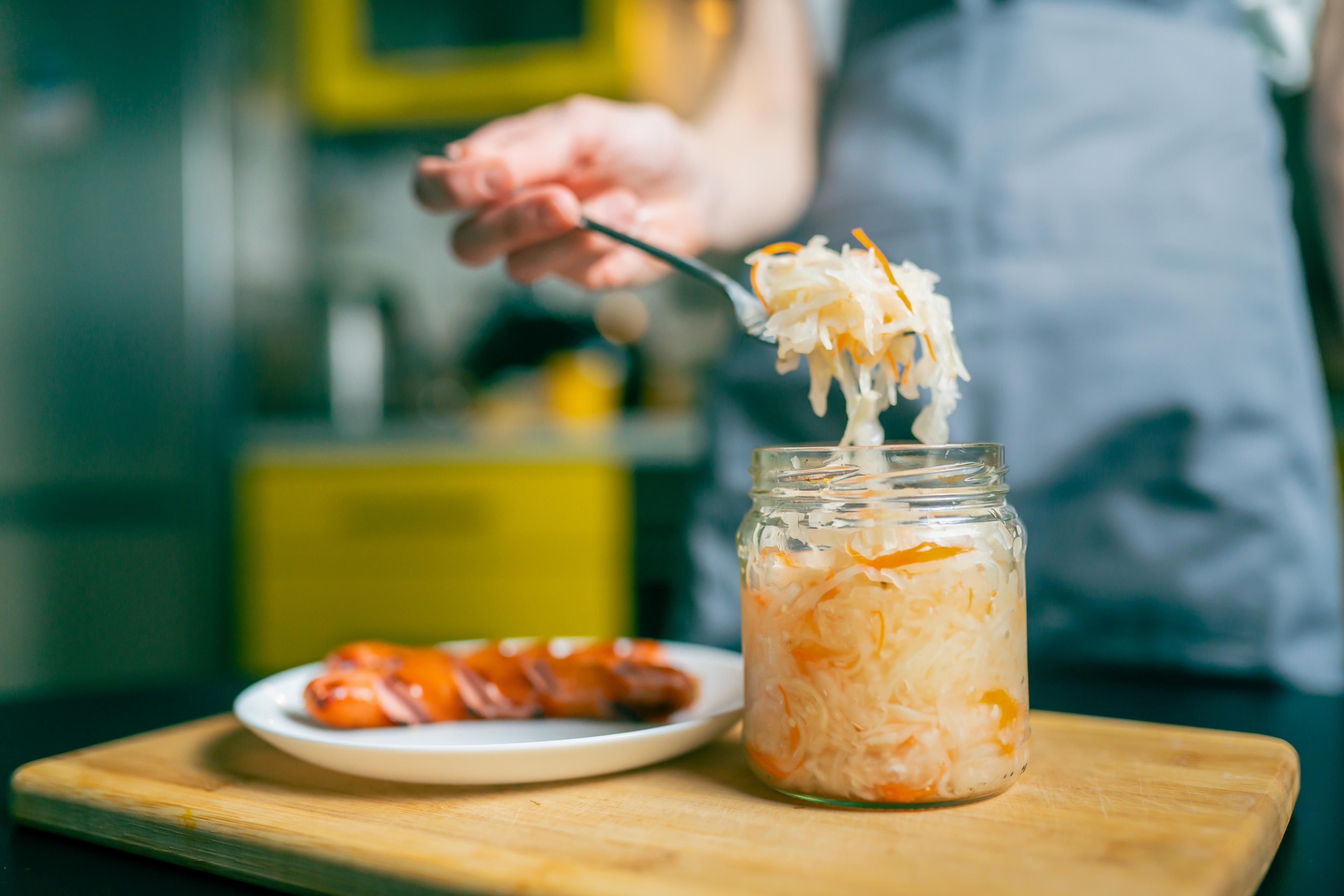Why Aging Changes the Rules of Nutrition

Susanne Antosh
| 6 min read

It’s a bit surprising to learn how much adults’ nutritional needs change between middle age and our golden years.
Did you know that you don’t need as many calories to maintain the same weight? And, muscle mass starts declining as early as 50? Our sense of taste and smell dulls, too.
It turns out that you need to relearn quite a bit about your nutritional needs and put more energy into maintaining your health than ever before. We’ve provided a brief set of new rules below. Stay curious, strong and healthy, my friends.
What you don’t need
Low-quality foods. Fast, processed, packaged foods simply don’t offer you the quality ingredients and nutrients you need for optimal health in your golden years. Learn how to kick the fast-food habit for good.
Sodium. As we age, our taste buds and sense of smell diminish, which takes a lot of the fun out of eating. Don’t overcompensate with sodium. While it’s a necessary nutrient to maintain a healthy body, excessive sodium can increase your blood pressure and risk of heart attack. Instead, indulge in herbs and spices — they add a lot of flavor and are really good for you.
Iron. For postmenopausal women, the need for iron goes down considerably (to about 8 mg per day from 18 mg before menopause). Talk to your doctor to see if an iron supplement is necessary. And, try to eat a well-balanced diet with iron-rich foods. At the grocery, reach for beef or other meats, beans, lentils, iron-fortified cereals, dark-green leafy vegetables and dried fruit.
Calories. When you’re older, you don’t need to consume as many calories to maintain a healthy weight. Grace Derocha, Blue Cross Blue Shield of Michigan’s registered dietitian and health coach, says, “Strive to eat foods that are nutrient-dense with fiber, vitamins, minerals, antioxidants or complex carbohydrates; choose heart-healthy fats and lean protein. As we age, the body’s metabolism naturally slows down, so focus on reducing portions while adding healthy foods daily.”
What you do need
Antioxidants. These compounds defend your cells from harmful free-radical molecules. Accumulated free radicals can put your body in an oxidative state, which stresses your cells, can damage your DNA and puts you at risk for heart disease, type 2 diabetes and cancer. Yuk. Arm yourself with richly colored, antioxidant-rich foods from the produce aisle, such as blueberries, raspberries, strawberries, papaya, pomegranate, kiwi, avocado, red, yellow and orange peppers, red cabbage, beets, sweet potatoes, spinach and kale. Yum.
Calcium and vitamin D. Older adults absorb less calcium. Eating high-calcium foods, such as dairy products, almonds, dark leafy greens, celery and papaya, and taking calcium supplements can help build your bones and prevent brittleness.
But, to absorb that calcium, you need vitamin D, too. Good dietary sources of vitamin D include: tuna, salmon, egg yolks and vitamin D-fortified products like orange juice or cow, soy or nut milks. Since vitamin D doesn’t occur naturally in many foods, get more from the best source, our sun. Spend about five to 20 minutes (based on your skin tone) every day outside or by a sunny window with your arms and legs exposed. Just be mindful to use some broad-spectrum SPF to block the damaging rays if you’ll be in the sun longer than that; and, always put SPF on your face when you’re in the sun.
Fiber. There’s a lengthy list of reasons to embrace a high-fiber diet. Not only does fiber aid in digestion and prevent constipation, but it rids the body of toxins and waste, significantly reduces the risk of heart disease, improves blood-sugar levels for people with diabetes and may help cut cholesterol. The average American only gets about 10 grams of fiber per day, when we should be striving for 30 to 45 grams per day. Whole grains, fruit and vegetables are excellent sources. Fiber gummies and dissolvable fiber are easy ways to supplement your fiber intake. Tip: Start slowly to prevent uncomfortable abdominal gas and drink extra water.
Leucine-rich protein. It’s important to consume protein every day to keep the muscle in your muscles (and to do daily physical activity). Why? Gradual loss of strength and muscle mass begins by the time you turn 50 and really starts going south once you reach your 65th year. Muscle boosts your metabolism and helps you stay lean, improves your physical vitality and lowers your risk of falls and injuries as you age.
What’s the best kind of protein to eat for building and rebuilding muscle in our golden years? “Studies have shown that eating quality protein with high amounts of the amino acid leucine is essential,” says Derocha. Leucine-rich protein comes from animal sources, such as beef, lamb, pork, poultry, fish, eggs and milk products, and vegetarian sources such as beans, nuts and seeds.
How much protein should you consume? It might surprise you, but for older adults, it’s much more than the recommended daily allowance. This post is a reliable source for understanding how much protein you need every day.
Potassium. Medications for blood pressure and other health conditions that creep up as you age can deplete this vital mineral from your body. Healthy potassium levels help you maintain healthy blood pressure, nerve and muscle function. Luckily, this nutrient is available to you in a wide variety of plant-based foods — not just bananas — add avocado, sweet potato, spinach and coconut water to your diet, too.
Vitamin B12. Up to 20 percent of adults over age 50 may have a borderline vitamin B12 deficiency. Symptoms of a deficiency include numb, tingling hands or feet, difficulty walking, memory loss, difficulty thinking and reasoning, weakness or fatigue. If you’re over age 50, the National Institute of Medicine says you can get the proper daily amount from a standard multivitamin supplement because you may not be able to absorb enough through foods.
Water. As we age, we lose body water content and don’t sense thirst as well as we used to. Drinking the recommended 64-ounces (or eight cups) of water every day can be tough. To prevent dehydration, consciously focus on taking water breaks throughout the day. To make it easier, try some of these self-help tips:
- Take a bottle of water with you everywhere you go. And, always keep a glass of water at hand when you’re at home.
- Set a deadline. Commit to drinking four cups by lunchtime and eight cups by bedtime.
- Track how much you drink every day with a “hydration tracking bottle.” Look for one with visual reminders of your progress.
- Set a reminder. There are many “drink water” apps available for smartphones or tablets.
- Add flavor when water gets boring. The hint of cucumber, lemon, ginger or fresh herbs like mint or basil make consuming large quantities of water more pleasant.
If you want to learn more:
- Check out the many great resources at nutrition.gov.
- Use the United States Department of Agriculture’s Daily Reference Intake Calculator to see your personal dietary needs (based on your age, weight, height, activity level and the most current nutritional data).
- Subscribe to our Midlife Map series for more content geared toward life in your 40s, 50s and 60s.
Please leave this field empty Interested in more of this content? We'll send related updates right to your inbox. Email Address *
Enjoy your new subscription!
If you find this post useful, make sure to check out:
- Hot Flashes and Hot Yoga: Reflections on Middle Age
Photo credit: People Images





